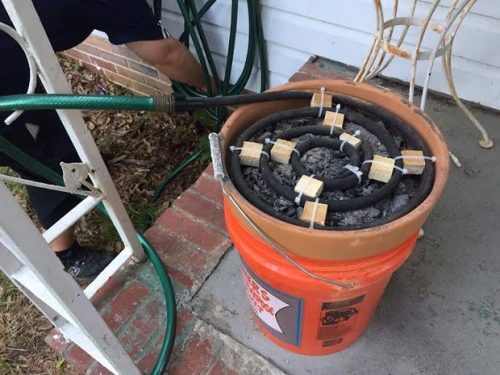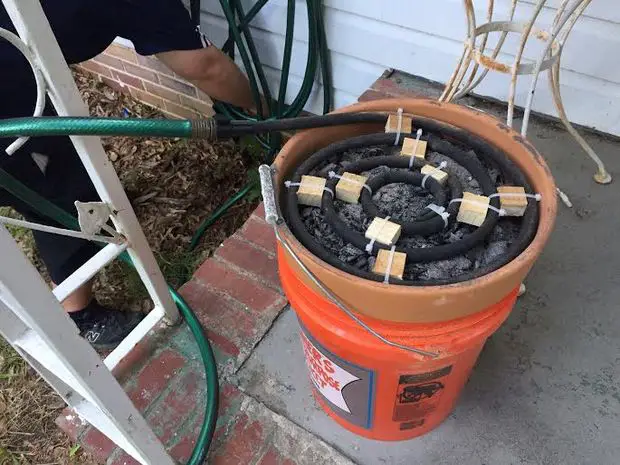The process of how to make Homemade lye from wood ash is detailed in this step by step process and should be carefully handled. The materials that you will need in order to be able to successfully make your own lye are very ordinary and are not very expensive.

Make sure you like The Homestead Survival on Facebook, Shop AMAZON with Us and explore our PINTEREST BOARDS for innovative ways you can become self-sufficient on a budget.
You may have decided to set your hands to making up a good batch of lye. This is an interesting project to undertake as a do it yourself homesteader.
And the great news is that making lye is quite easy for you to be able to do. The process simply involves using water and ashes from hardwood. Lye is the key ingredient that is needed when you make your very own soap at home.
You really do not require a lot of material, so the process is fairly budget friendly for those who are always looking for ways to be able to save as much money as possible.
You will need a bucket that is at least five gallons in size, or any large bucket. And you will also need a bucket that is smaller, which you will place inside the larger one. It is a good idea to use a clay bucket, but you can actually use any material that you are able to drill some holes in.
Note that you will also need some mesh, but be sure that you do not use aluminium, as the lye will eat through the aluminium. The article will also list all the other things that you need and will provide easy to follow instructions, so that you will be able to make lye just right.
A lye is a liquid obtained by leaching ashes (containing largely potassium carbonate or “potash”), or a strong alkali which is highly soluble in water producing caustic basic solutions. “Lye” is commonly the alternative name of sodium hydroxide (NaOH) or historically potassium hydroxide (KOH)
Food uses: Lye is used to cure many types of food, including the traditional Nordic lutefisk, olives, canned mandarin oranges, hominy, lye rolls, century eggs, and pretzels.
Soap making: The “Cold Process” method is often used to make soap from lye. The lye is mixed with water, and then base oils, butters and fragrances are added. The gradual chemical reaction between the lye and the fats eventually produces a solid soap.
Household Cleaner: Lyes are also valued for their cleaning effects. Sodium hydroxide is commonly the major constituent in commercial and industrial oven cleaners and clogged drain openers, due to its grease-dissolving abilities.
Tissue digestion: Sodium or potassium hydroxide can be used to digest tissues of animal carcasses or deceased humans. Often referred to as alkaline hydrolysis, the process involves placing the carcass or body into a sealed chamber, adding a mixture of lye and water and the application of heat to accelerate the process.
Click here to read about how to make Homemade lye from wood ash:
http://www.instructables.com/id/Make-your-own-lye-1/?ALLSTEPS
[amazon-related-products keywords=”lye”]


